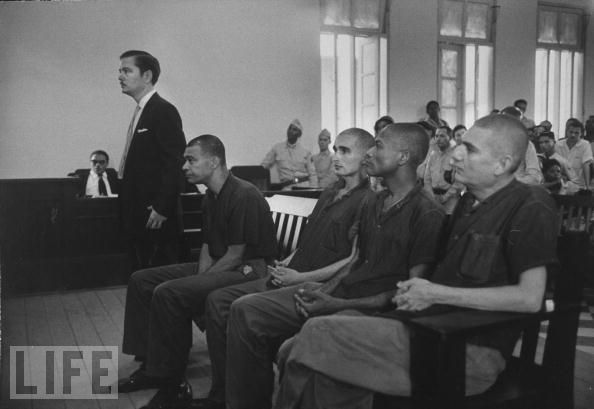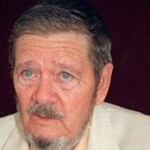CASTRO INTERVENTION IN THE DOMINICAN REPUBLIC. (1959)
Castro did help a revolutionary force first attack to the Dominican Republic on June 14 and June 20, 1959, few months after the revolution in Cuba have won to the Dictatorship of Fulgencio Batista.
According to Richard Lee Turits in his book ‘Foundation of Despotism’ he reports the First attack came on three fronts, by both land and sea. The fighters were Dominican exiles and other revolutionaries from Cuba and elsewhere in Latin America. These members of the Dominican Liberation Movement had trained in Cuba for about three months. The air landing in Constanza, in the middle of the country, involved several dozen rebels. They were dressed in Dominican Air Force uniforms and fought Trujillo’s forces in the nearby mountains.
On July 6, 1959, Time Magazine reported: “‘If aggressors want to see their beards and brains flying like butterflies, let them approach the shores of the Dominican Republic,’ warned Dictator Rafael Leonidas Trujillo. A pair of Cuba-based rebel invasion forces—one of 63 men arriving by C46 at the mountain-ringed, mid-island town of Constanza, and another of 150 aboard two Chris-Craft launches that landed near Puerto Plata on the north coast—put the strongman’s boast to the test of arms. Last week, both by government and rebel account, Trujillo proved that he meant what he said.”
Indeed, as for the Puerto Plata attack, Turits argues that they maintained loyalty to the regime and chose to defend it rather than help the rebels. Turits notes that the peasants of other, disaffected areas, such as Monte Plata, might have been more likely to help. As Time reported, “the government countered rebel claims of a successful landing with a communiqué full of gore. The ‘liberators’ who survived an air and naval bombardment, it said, ‘waded ashore apparently hoping still to march on Ciudad Trujillo with the aid of peasants. It did not work that way. Machete-swinging farmers beat government troops to the beach. The invasion ended in a murderous flailing of razor-sharp machetes on the reddened sands. Army patrols found only dismembered bodies.'”
Trujillo used the occasion to start modernizing his military capabilities, and he awarded medals to the successful soldiers which read, “Constanza Heroismo y Lealtad.” Cuba ended diplomatic relations with the Dominican Republic and tried to drum up United Nations support for the rebels.
As for the domestic revolutionaries, the failed invasion had a catalyzing effect. The revolutionary group in Puerto Plata, led by Manolo Tavarez Justo and Minerva Mirabal Reyes, gave themselves the name “El Movimiento 14 de Junio” or “The Fourteenth of June Movement,” or “J14” for short. While the peasants of Puerto Plata had failed to help the invading forces as expected, Turits notes that the revolutionaries consisted mainly of the country’s new middle class of young professionals and merchants, as well as university students. The movement was, understandably, banned, and the assassination of its leaders only caused more and more revolutionary ferment in the country. Ten cubans and 200 Dominicans revolutionaries had been massacred.
Last year the Rebel Army Commander, presented in Holguin his book “La victoria de los caidos” (The Victory of the Fallen Ones) where he narrates what is considered the first manifestation of internationalist solidarity by the Cuban Revolution.
The book includes the testimony of revolutionaries who travelled to the Dominican Republic in the summer of 1959 to fight against Trujillo’s dictatorship, the CNA highlighted.
The commitment for the liberation of that sister nation, said Delio Gomez Ochoa, who led the invasion to Dominican Republic, was strengthened when I met Dominican patriot Enrique Jimenez Moya, in January 2, 1959, who then was appointed at the command of the Holguin Regiment headquarters.
The expedition was prepared in Cuban camps and although it was a military failure, it shook the conscience of that Caribbean nation, which became the scenario of rebelliousness, what met an end with the execution of general Trujillo in the night of May 30, 1961.
“This book is a tribute to those almost 200 people that built this story of value and love, of which only six survived”, said Delio.
SaverA/Cubaahora/InternetPhotos/TheCubanHistory.com
The Cuban History, Hollywood.
Arnoldo Varona, Editor.
INTERVENCIÓN DE CASTRO EN LA REPÚBLICA DOMINICANA.(1959)
Castro hizo ayudar a una fuerza revolucionaria primer ataque a la República Dominicana el 14 de junio y 20 de junio de 1959, pocos meses después de la revolución en Cuba habían ganado el poder a la dictadura de Fulgencio Batista.
Según Richard Lee Turits en su libro ‘Fundación del despotismo “, informa el primer ataque se produjo en tres frentes, tanto por tierra y mar. Los combatientes eran exiliados dominicanos y otros revolucionarios de Cuba y en otras partes de Latinoamérica. Estos miembros del Movimiento de Liberación Dominicana habían entrenado en Cuba durante unos tres meses. El desembarco aéreo en Constanza, en el centro del país, participan varias decenas de rebeldes. Iban vestidos con uniformes de la Fuerza Aérea Dominicana y lucharon fuerzas de Trujillo en las montañas cercanas.
El 6 de julio de 1959, la revista Time informó: “‘Si agresores quieren ver sus barbas y cerebros volar como mariposas, dejar que se acercan a las costas de la República Dominicana”, advirtió el dictador Rafael Leonidas Trujillo Un par de invasión rebelde con sede en Cuba. fuerzas-uno de 63 hombres que lleguen en C46 en la montaña anillado, la ciudad centro de la isla de Constanza, y otra de 150 a bordo de dos lanchas Chris-Craft que aterrizaron cerca de Puerto Plata, en la jactancia del hombre fuerte de costa poner norte a la prueba del brazos. La semana pasada, tanto por cuenta del gobierno y los rebeldes, Trujillo demostró que él quiso decir lo que dijo “.
De hecho, como para el ataque de Puerto Plata, Turits argumenta que mantenían la lealtad al régimen y decidieron defenderlo en lugar de ayudar a los rebeldes. Turits señala que los campesinos de otras zonas, descontentos, como Monte Plata, podrían haber sido más propensos a ayudar. Como se informó Time “, el gobierno respondió reclamaciones rebeldes de un aterrizaje exitoso con un comunicado lleno de sangre. Los” libertadores “que sobrevivieron a un aire y el bombardeo naval, que dijeron, ‘se metió en tierra aparentemente esperando todavía a marchar en Ciudad Trujillo con la ayuda de los campesinos. No funcionó de esa manera. agricultores-Machete balanceando vencieron las tropas del gobierno a la playa. La invasión terminó en un agitando asesina de machetes afilados en las arenas enrojecidos. patrullas del Ejército encontraron cuerpos desmembrados única. ‘”
Trujillo aprovechó la ocasión para iniciar la modernización de sus capacidades militares, y se otorgó medallas a los soldados de éxito que decía, “Constanza Heroísmo y Lealtad.” Cuba terminó relaciones diplomáticas con la República Dominicana y trató de conseguir apoyo de las Naciones Unidas para los rebeldes.
En cuanto a los revolucionarios nacionales, la invasión no tuvo un efecto catalizador. El grupo revolucionario en Puerto Plata, dirigido por Manolo Tavárez Justo y Minerva Mirabal Reyes, dio a sí mismos el nombre de “El Movimiento 14 de Junio” o “La Decimocuarta del Movimiento de Junio,” o “J14”, para abreviar. Mientras que los campesinos de Puerto Plata no habían podido ayudar a las fuerzas invasoras como se esperaba, Turits señala que los revolucionarios consistieron principalmente en la nueva clase media del país de jóvenes profesionales y comerciantes, así como estudiantes universitarios. El movimiento fue, como es comprensible, prohibido, y el asesinato de sus líderes sólo causó más revolucionaria fermento en el país. Diez Cubanos y 200 Dominicanos fueron masacrados.
El año pasado, el Comandante del Ejército Rebelde, presentado en Holguín su libro “La victoria de los Caídos” (La victoria de los Caídos), donde narra lo que se considera la primera manifestación de la solidaridad internacionalista de la Revolución Cubana.
El libro incluye el testimonio de los revolucionarios que viajaron a la República Dominicana en el verano de 1959 para luchar contra la dictadura de Trujillo, la CNA destacó.
El compromiso por la liberación de esa nación hermana, dijo Delio Gomez Ochoa,quien dirigió a las fuerzas expedicionarias, se fortaleció cuando conocí patriota dominicano Enrique Jiménez Moya, en 02 de enero 1959, que luego fue designado al mando de la sede Holguín Regimiento.
La expedición fue preparada en los campos cubanos y aunque fue un fracaso militar, que sacudió la conciencia de esa nación caribeña, que se convirtió en el escenario de rebeldía, lo encontró su fin con la ejecución del general Trujillo, en la noche del 30 de mayo 1961.
SaverA/Cubaahora/InternetPhotos/TheCubanHistory.com
The Cuban History, Hollywood.
Arnoldo Varona, Editor.



 CASTRO Intervention in the Dominican Republic. (1959). + Intervención Castrista en la República Dominicana (1959).
CASTRO Intervention in the Dominican Republic. (1959). + Intervención Castrista en la República Dominicana (1959).![multiples[1]](https://www.thecubanhistory.com/wp-content/uploads/2011/09/multiples1.jpg)





